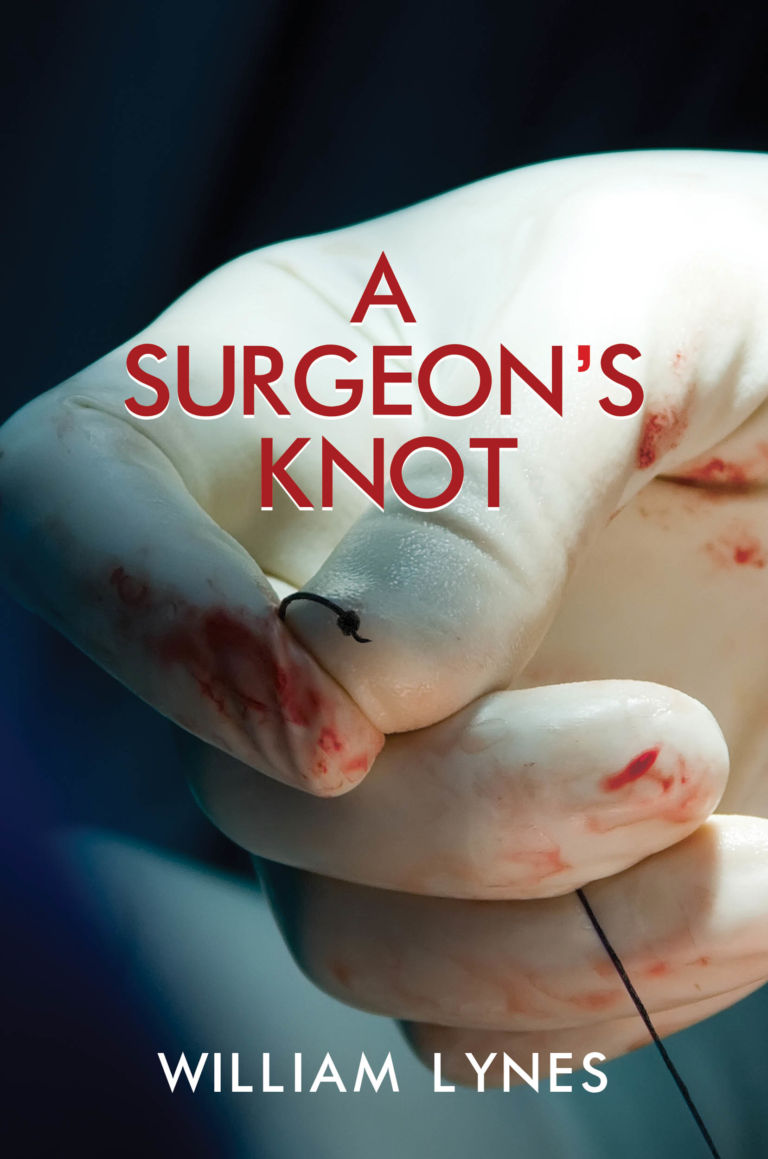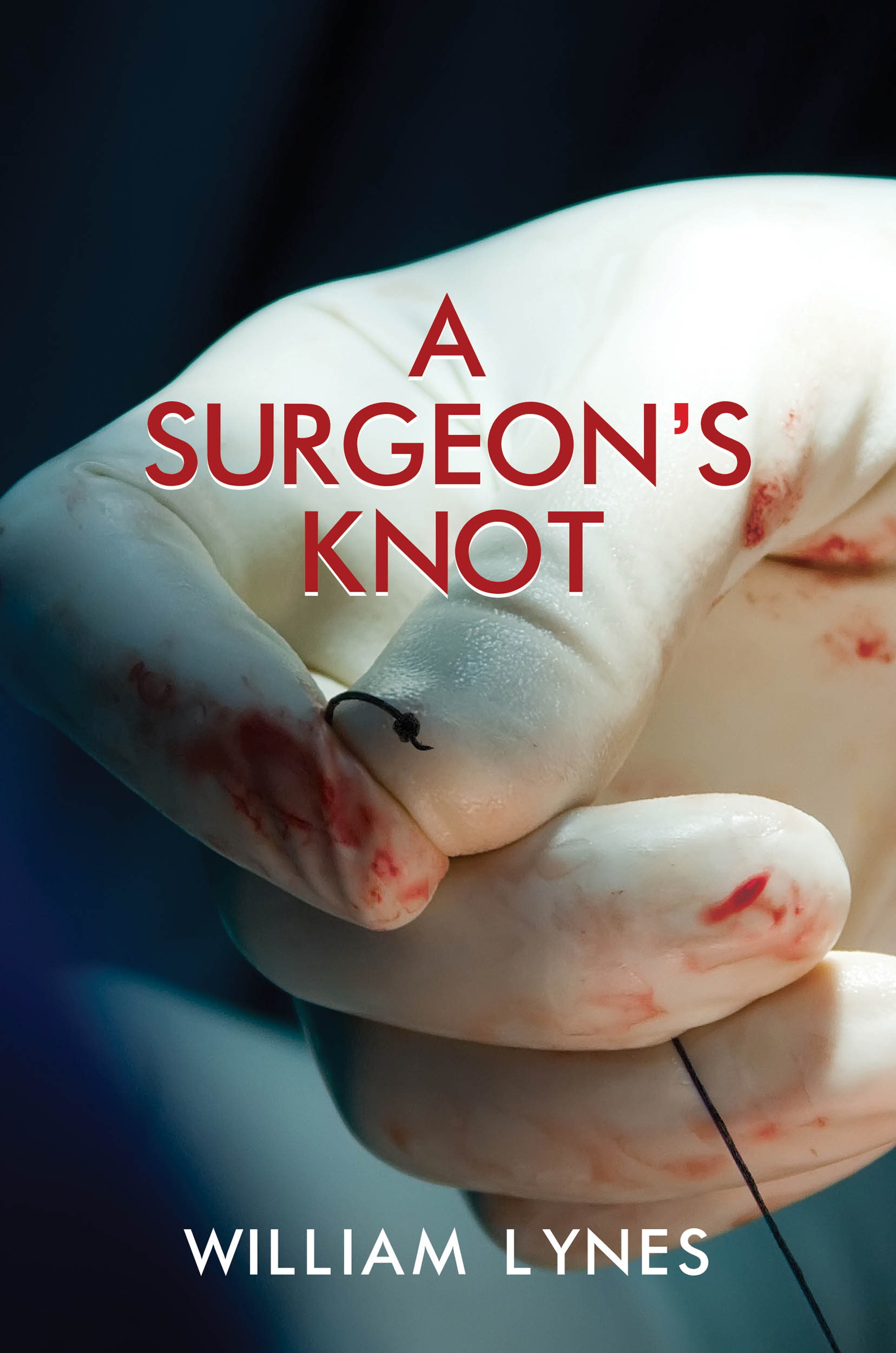A SURGEON’S KNOT–a clever reference to both an actual knot and the lead character’s habit of tying them during breaks in his day as a way of using the mundane to relieve his mind of weighty stress–is penned by a former surgeon, and so has an overpowering sense of being close to the bone of its subject matter. Author William Lynes is no longer a doctor, and perhaps a little of why that is shines through in his text. His book follows Jackson Cooper, an overworked new medical doctor doing an internship, as he encounters the stress of the learning process of surgery: the fear of doing operations that are relatively new to him, having to deal with crisis scenarios, and the horrible moment when he has to tell a family that their loved one has passed away.
The text is often quite technical: Lynes goes into some detail on how surgeries actually function as his character undertakes them–though he’s careful to simplify the language alongside the technical stuff– making the text accessible to the average reader, despite its sometimes intimate and complex explanations. The picture that Lynes paints (not unexpectedly) isn’t a pretty one. The medical profession, and surgery in particular, is depicted as graphic and overwhelmingly demanding, leaving little time for anything else. There are 24-hour shifts that evoke a calendar year’s worth of stress. If the text and story conveyed is realistic–and as the author is a former surgeon, we expect that it is–it’s both startling and more than a touch concerning.
For a general audience, A SURGEON’S KNOT is a novel’s worth of an education in medicine and its tough extremes, and a no-holds-barred glance at a grindingly harsh reality, something we could all benefit from appreciating. A niche novel, for sure, in that it’s so focused one single area, but good at delivering a poignant and important message.
Told through the eyes of a young trainee surgical doctor, A SURGEON’S KNOT is a novelized look at the full-on life of an overworked medic. It’s detailed, dark, and at times quite graphic in its description of injury, and a tough read that brings with it a sense of authentic perspective.
~James Hendicott for IndieReader


